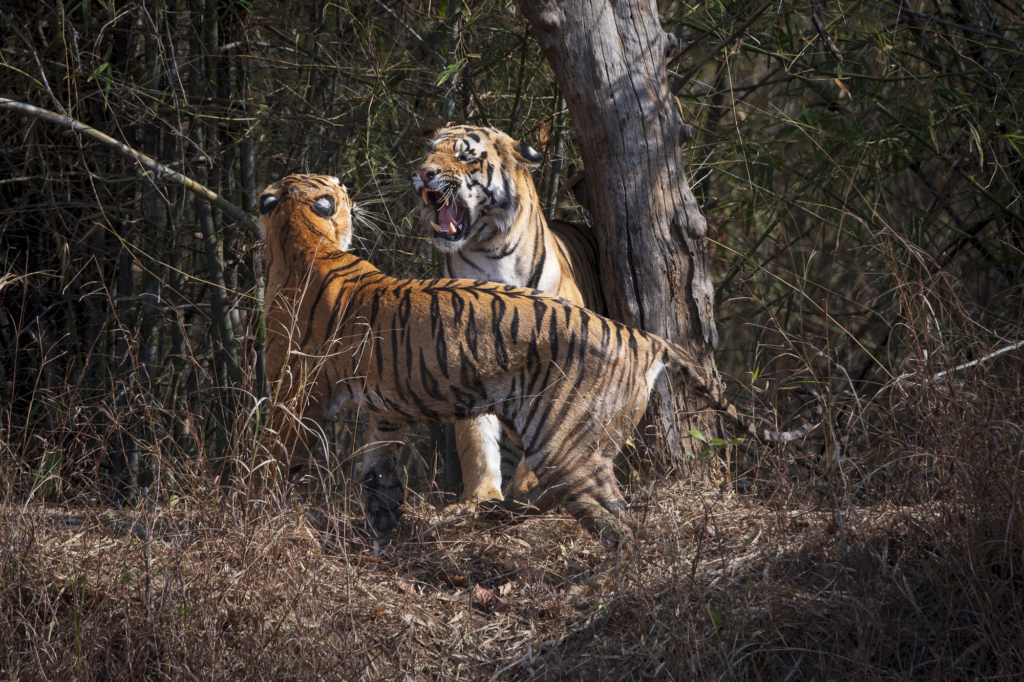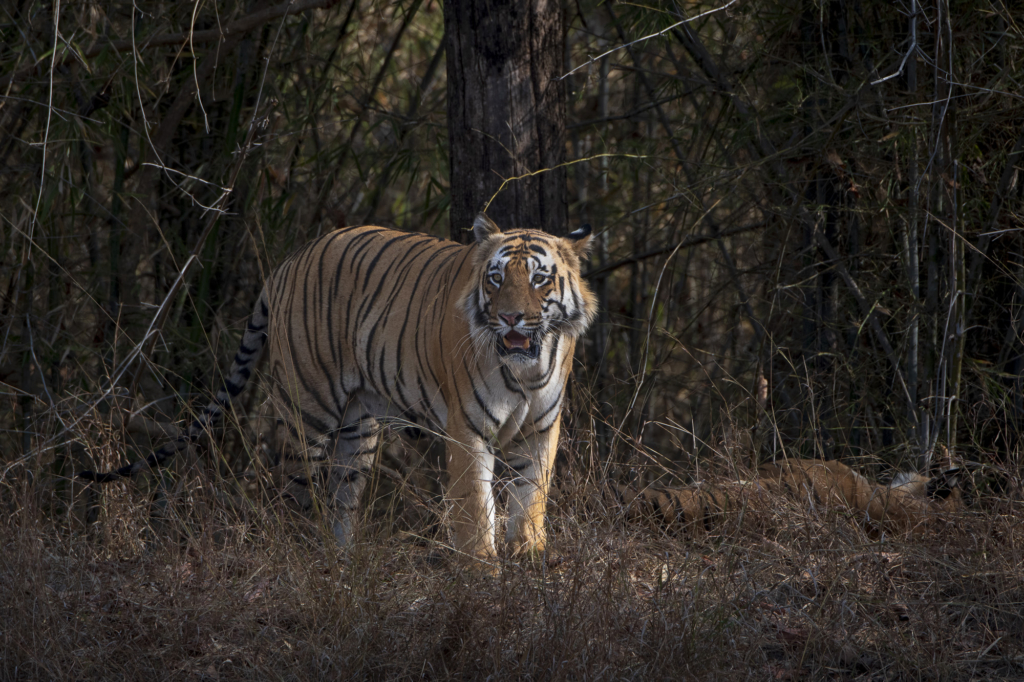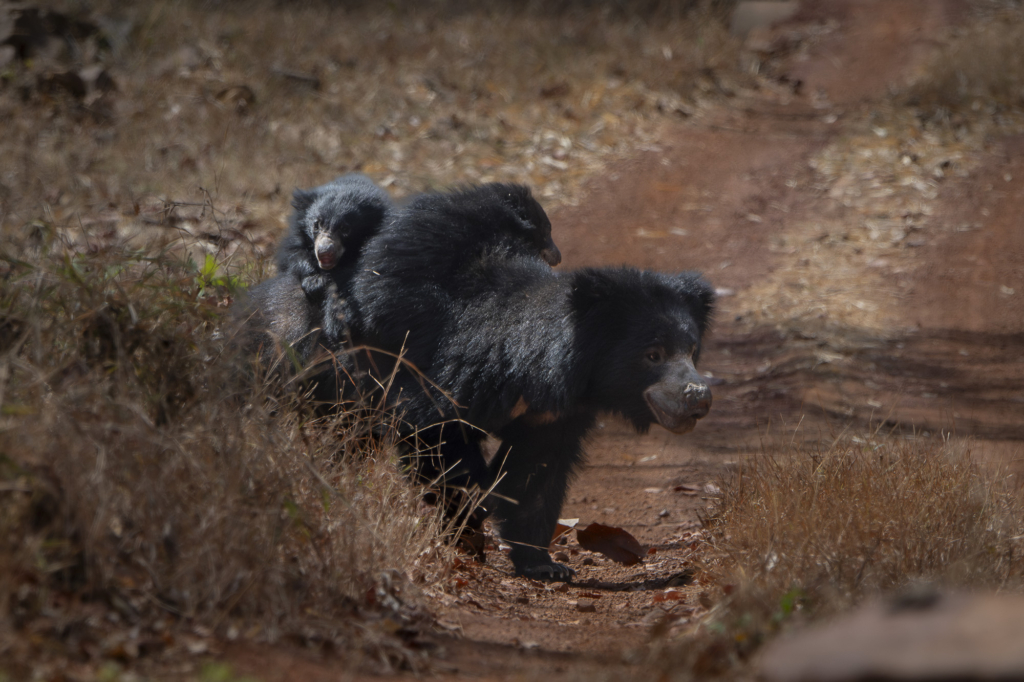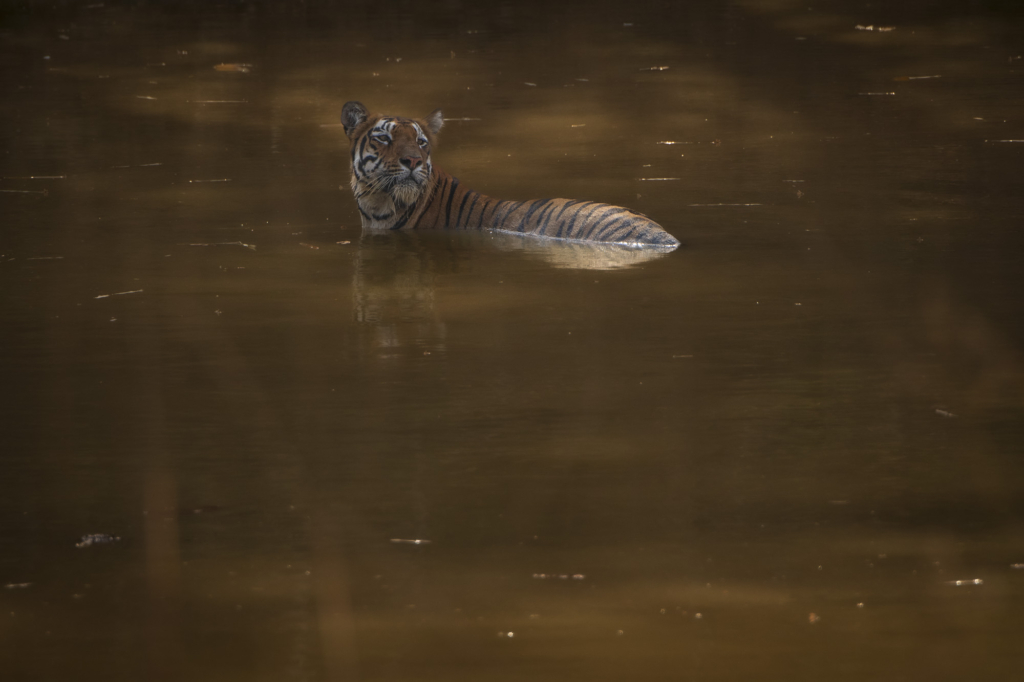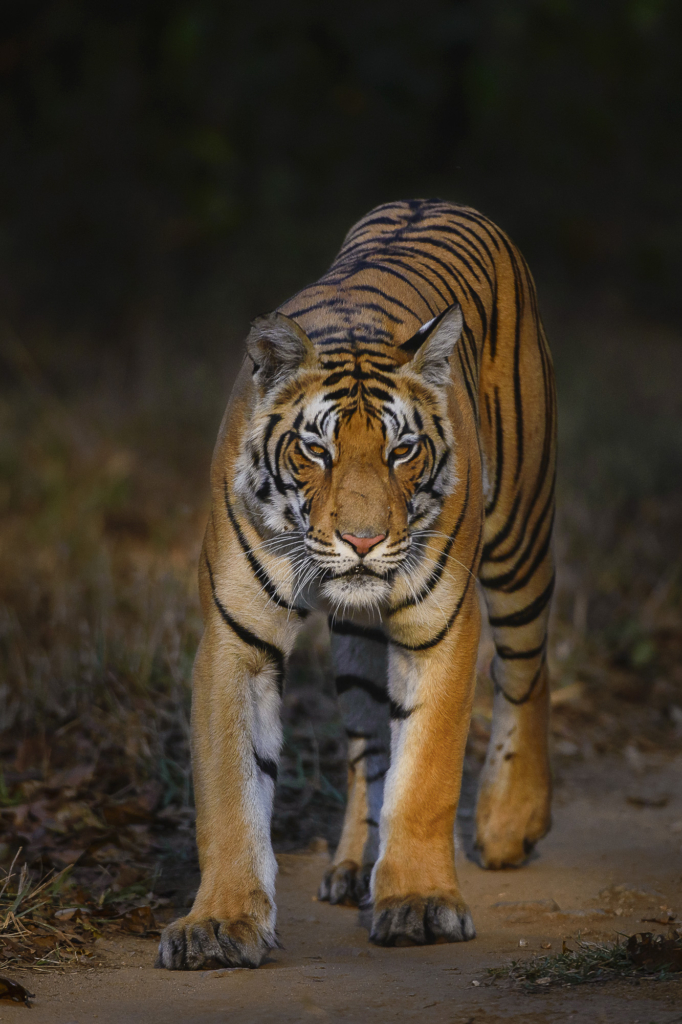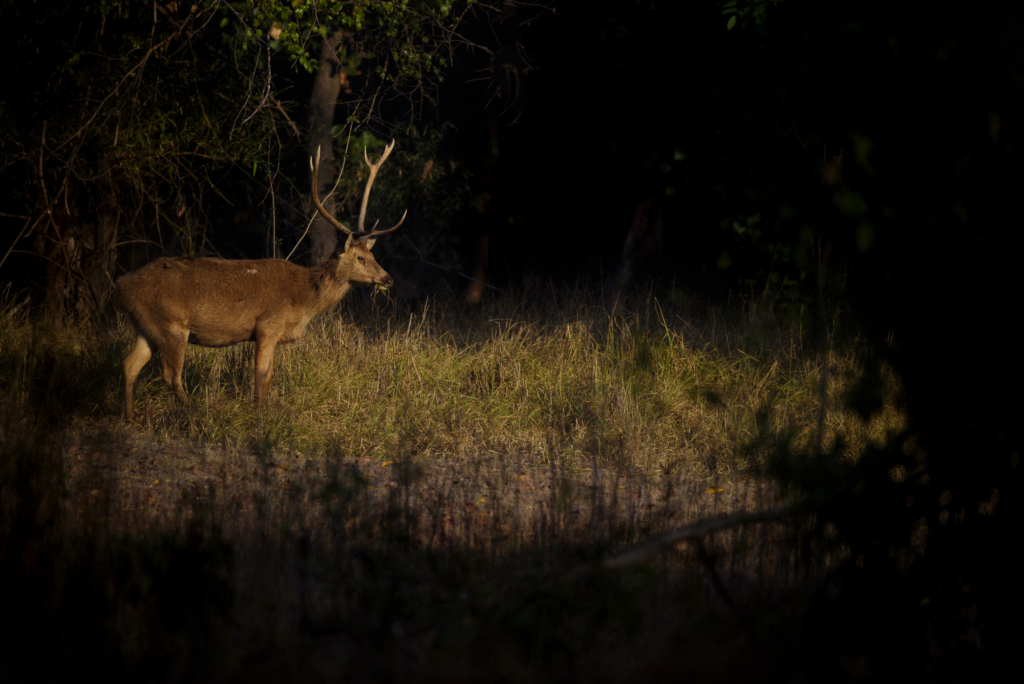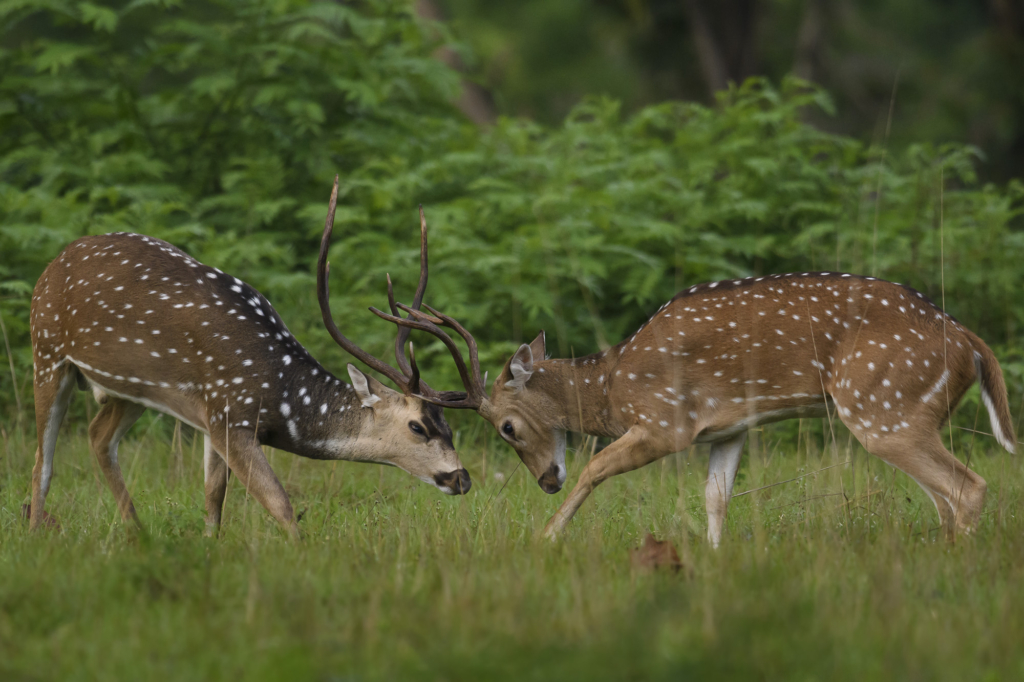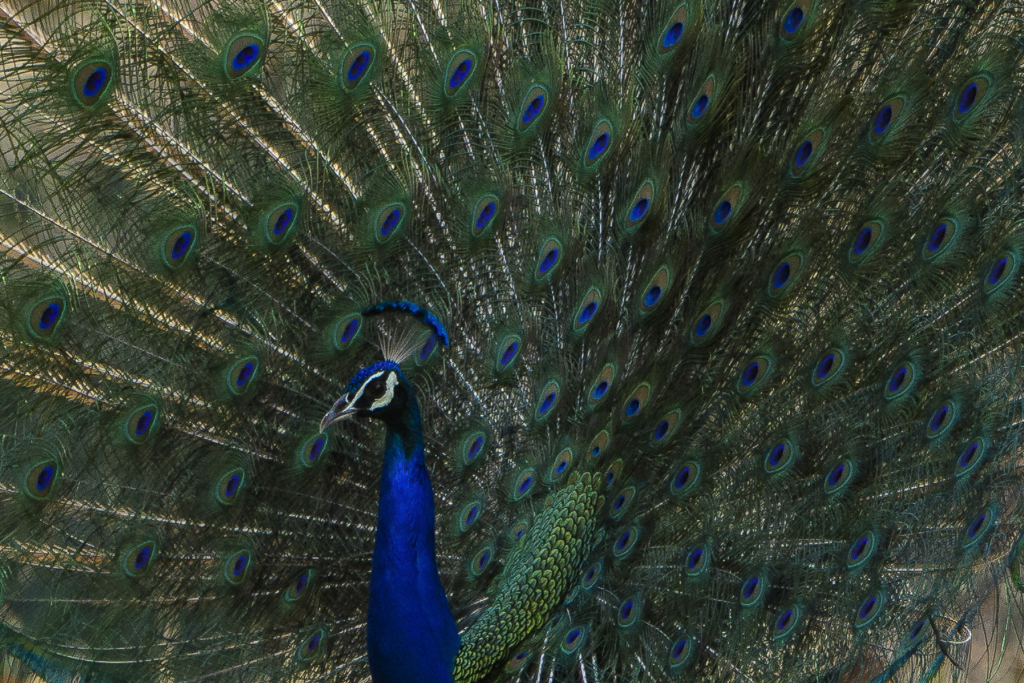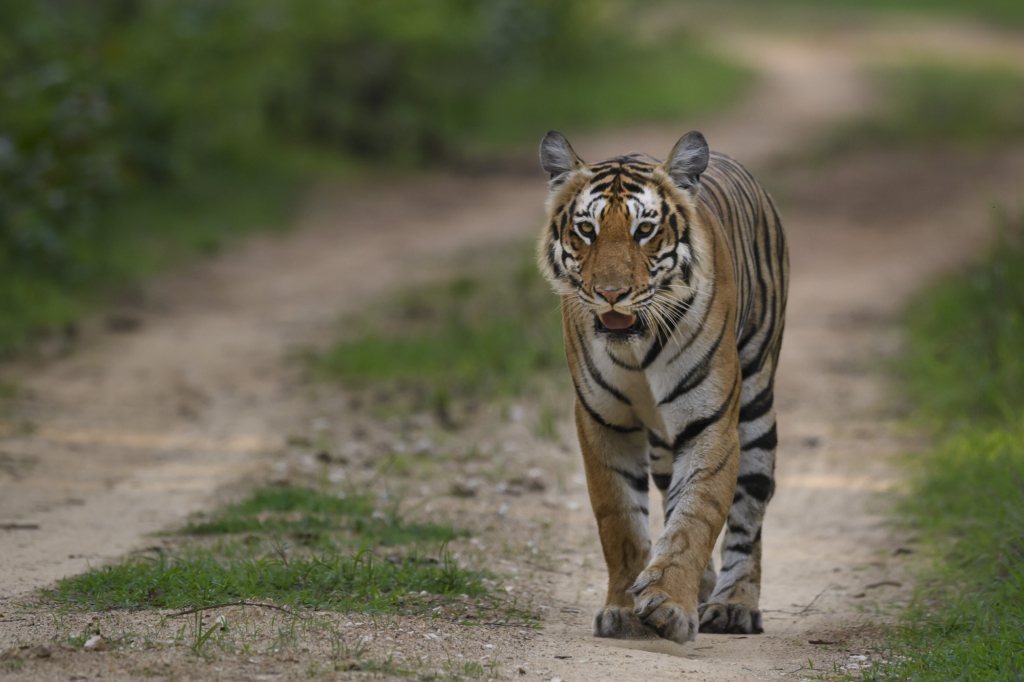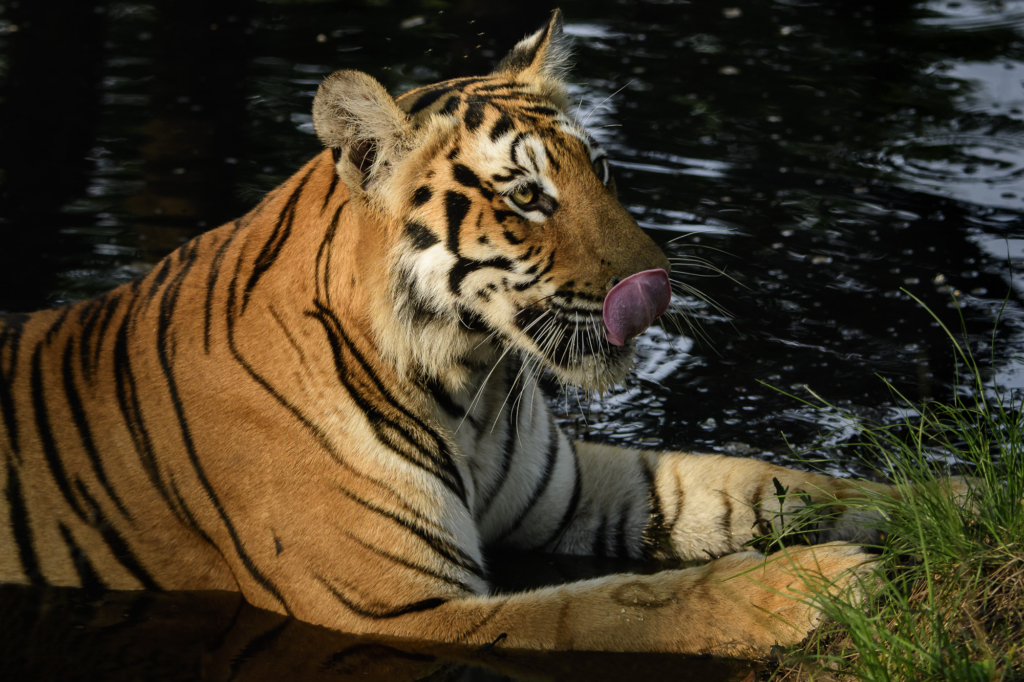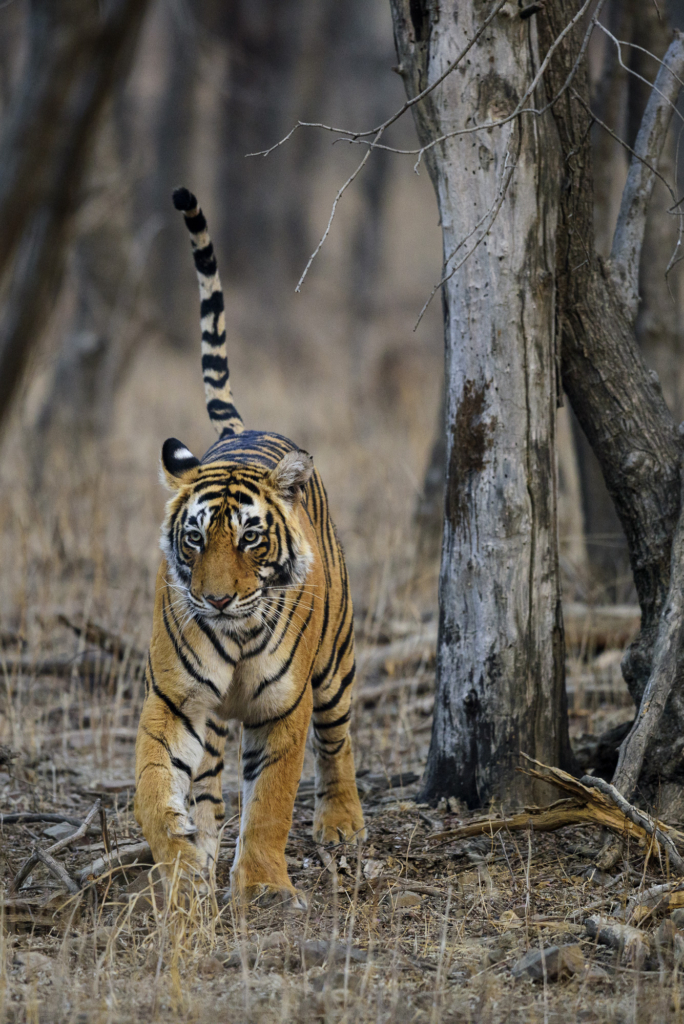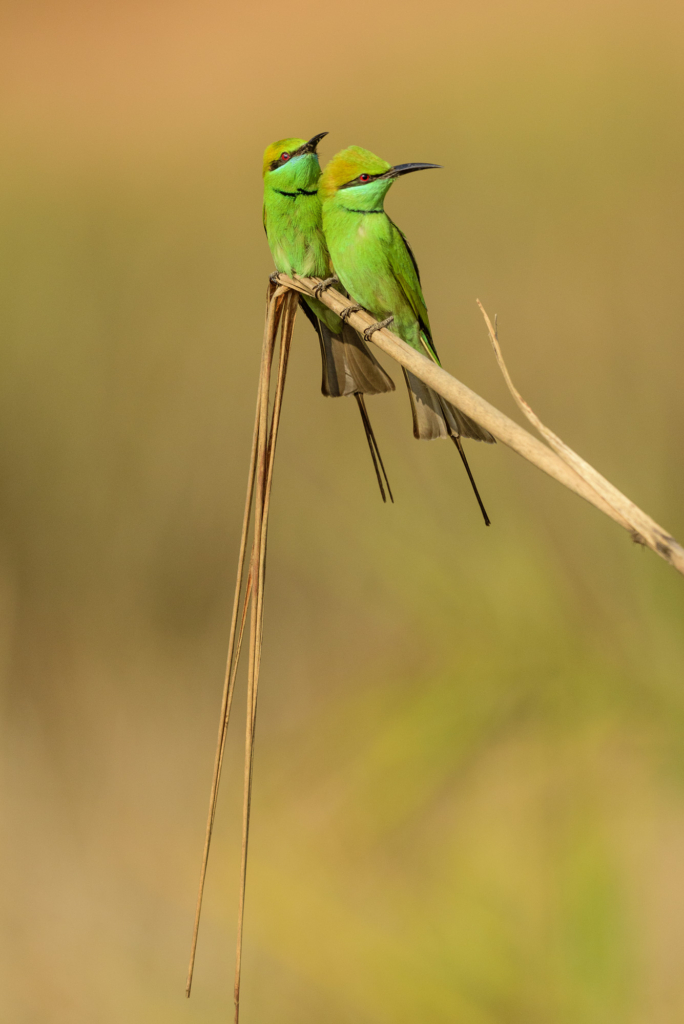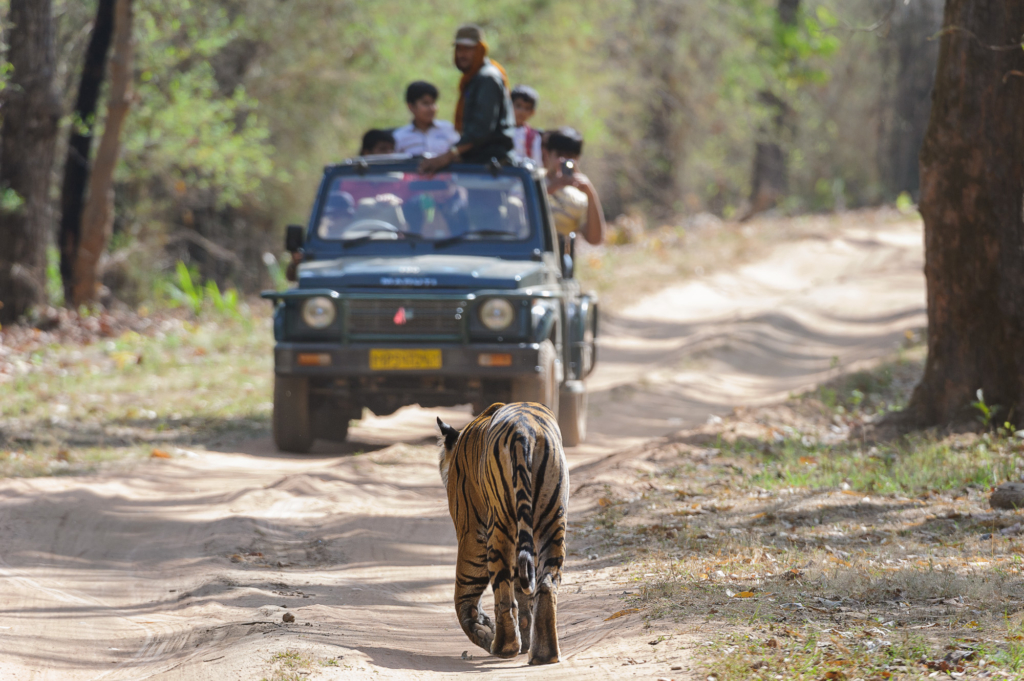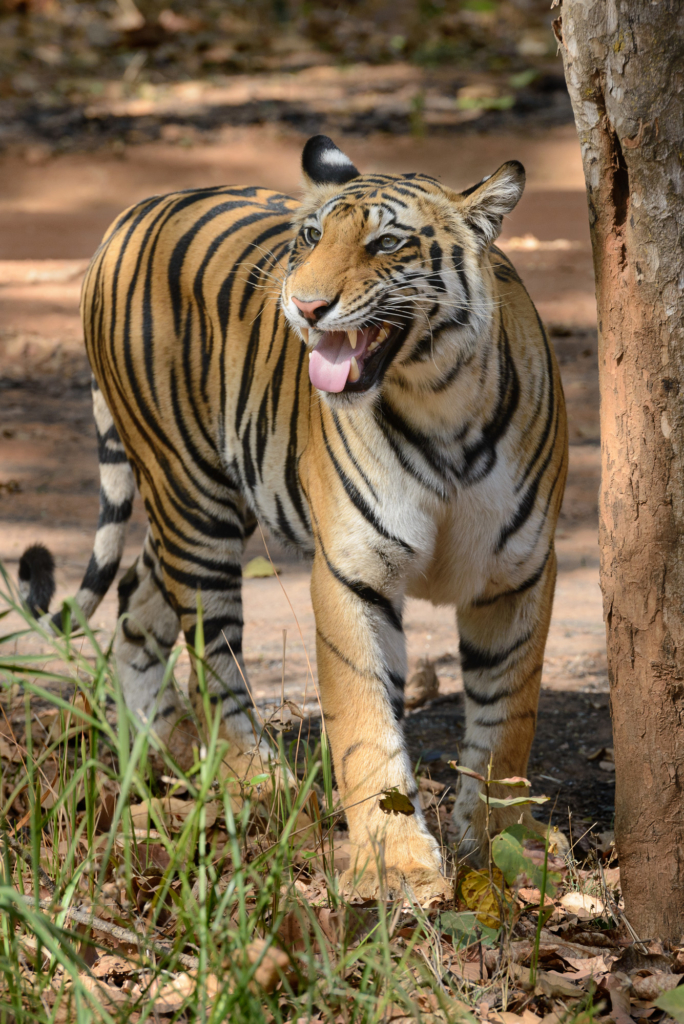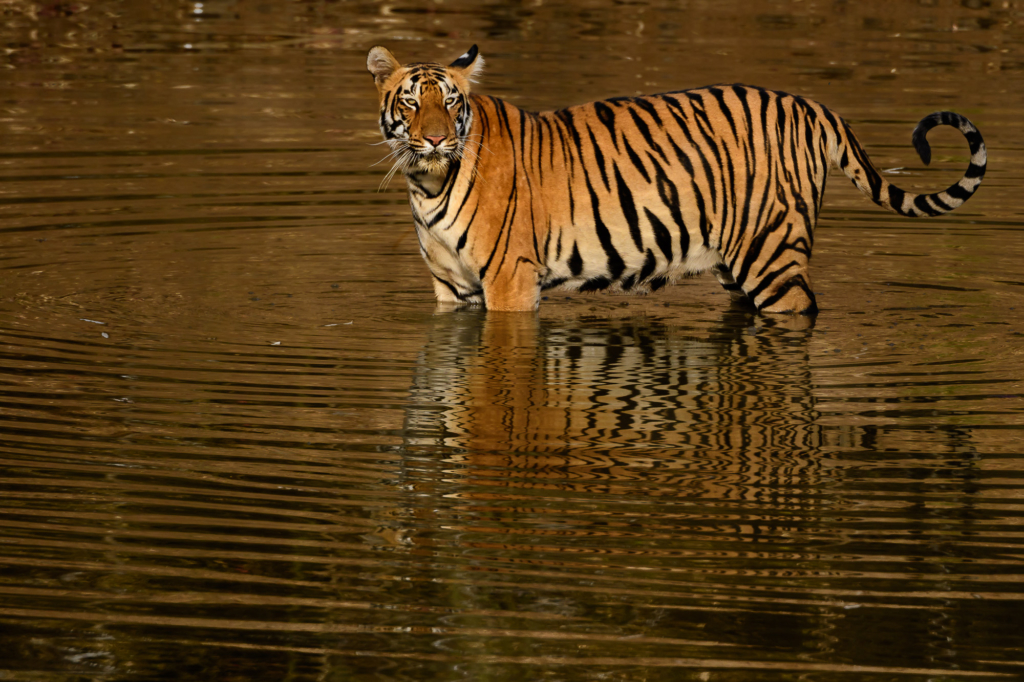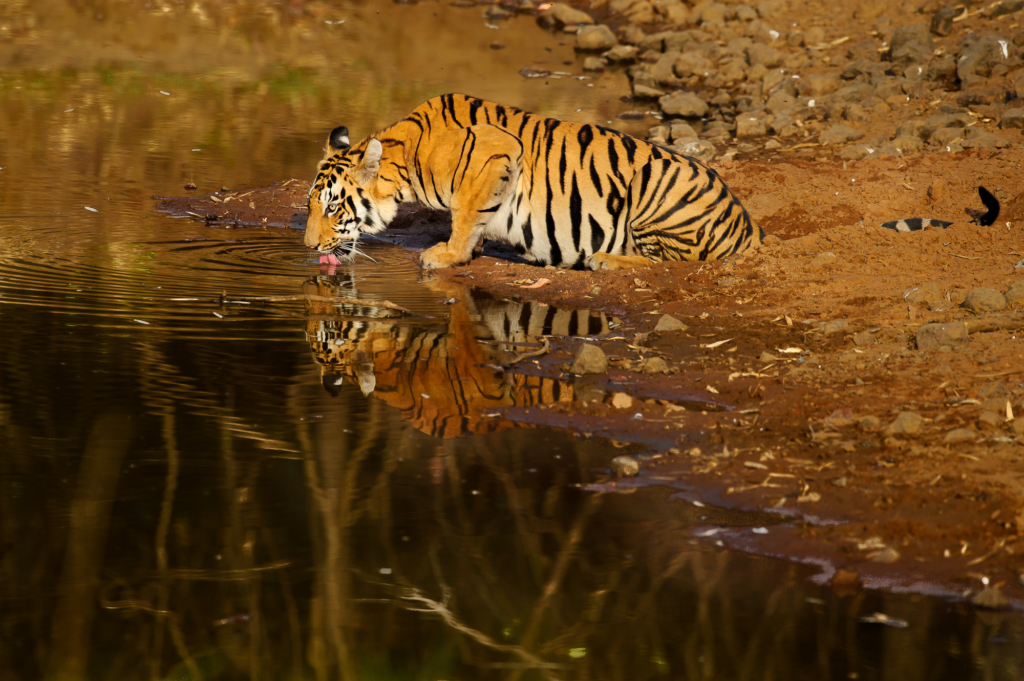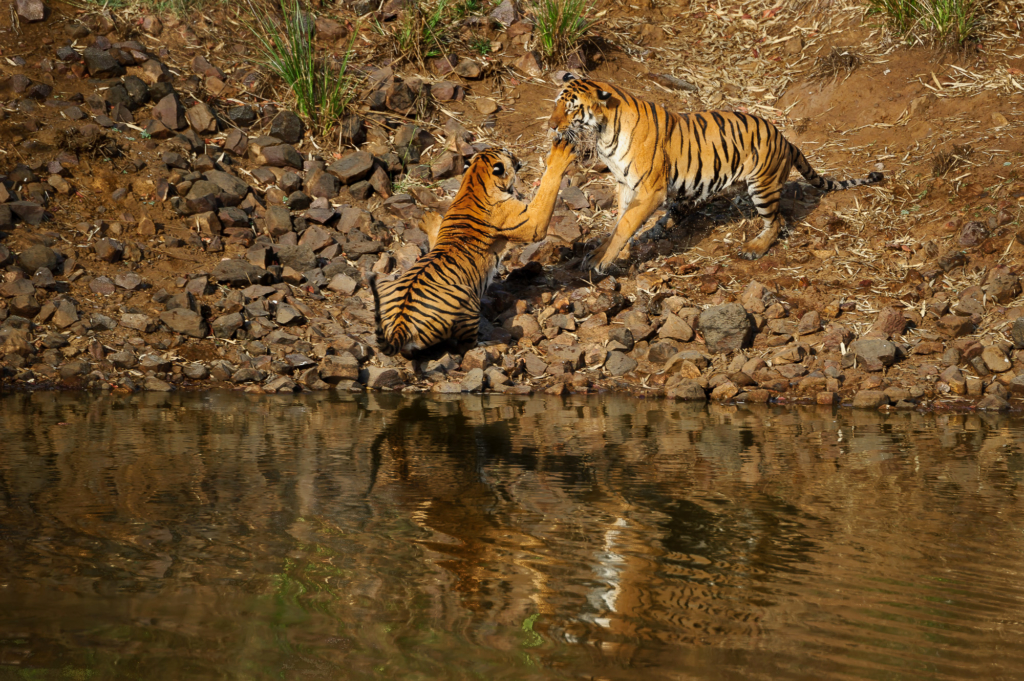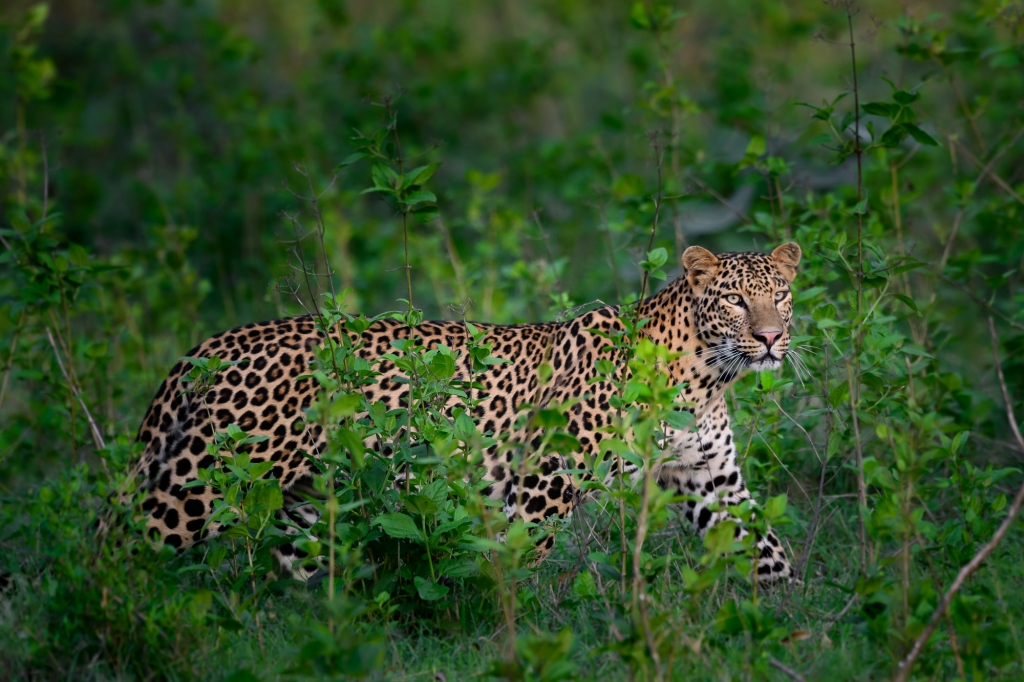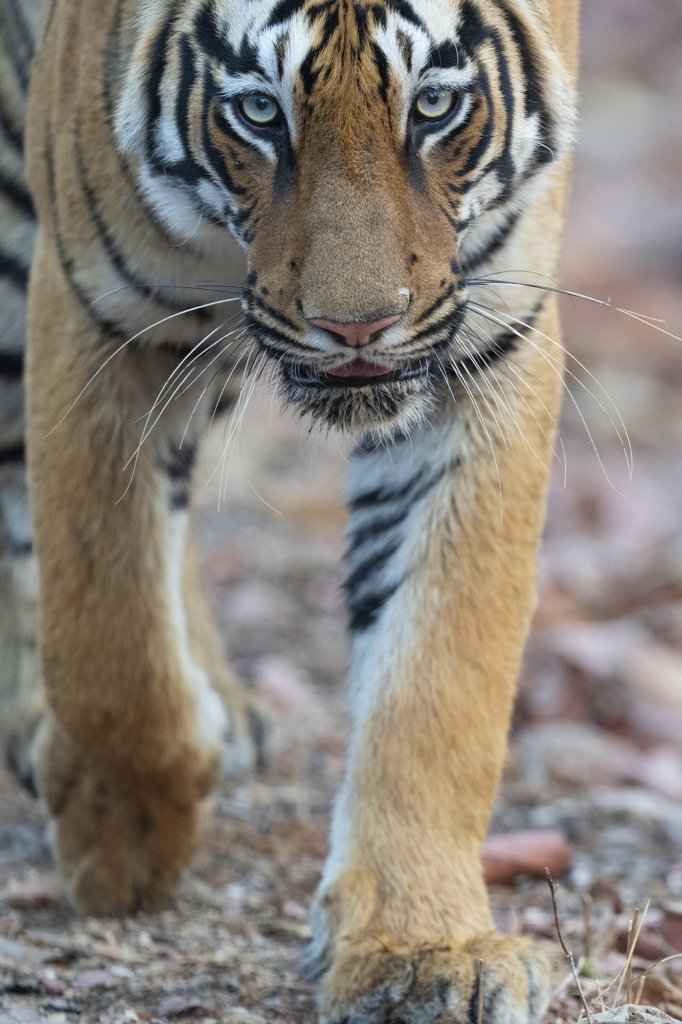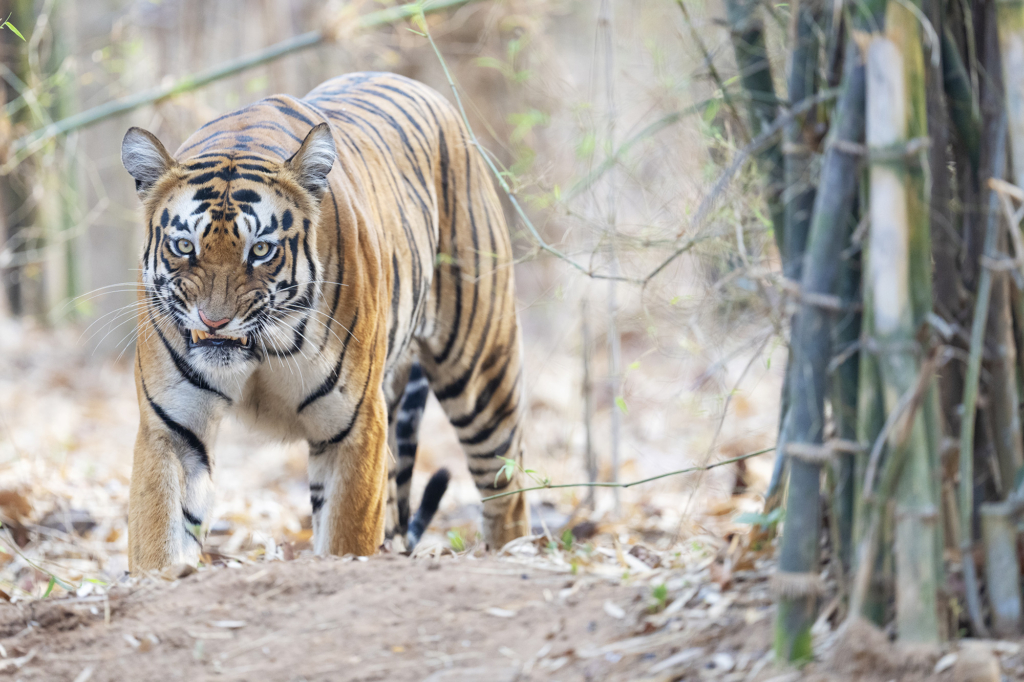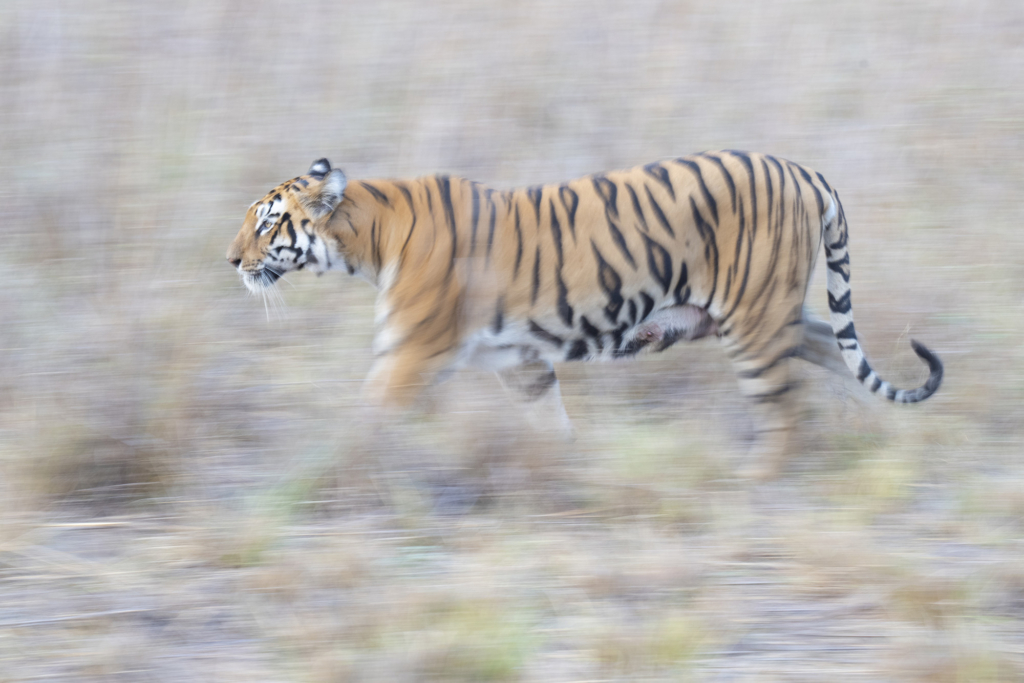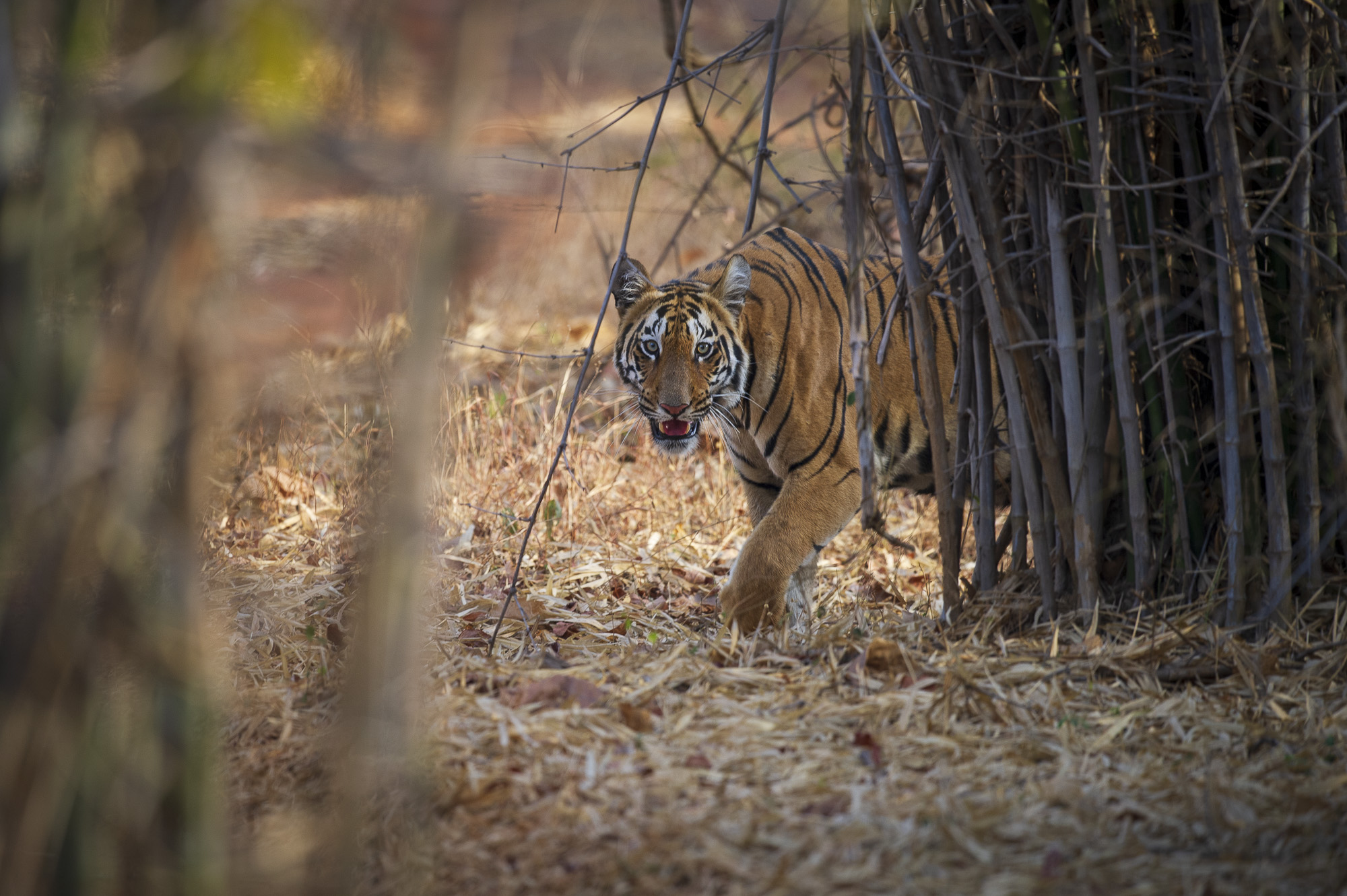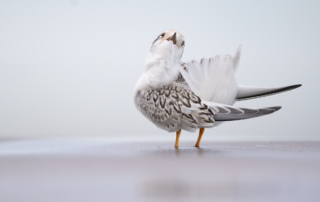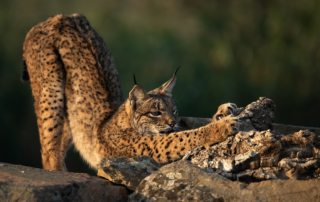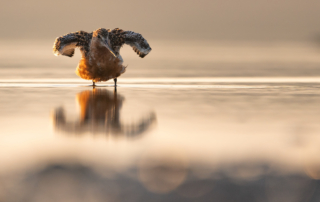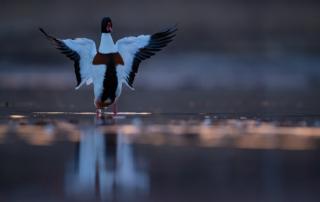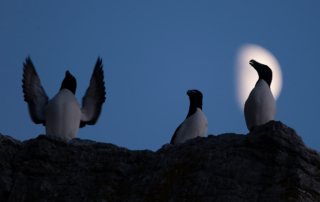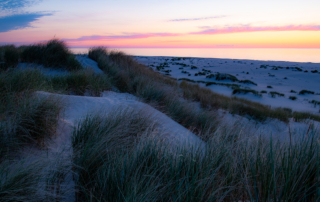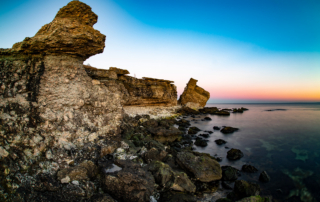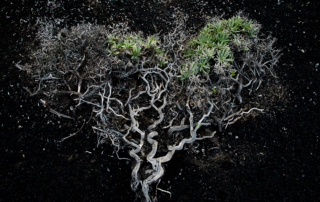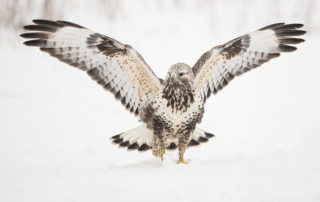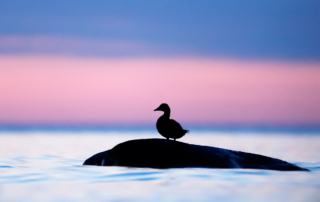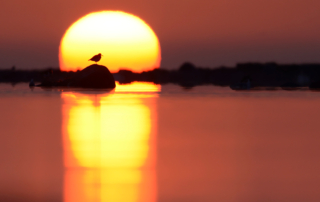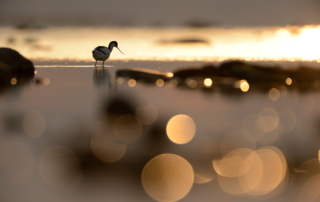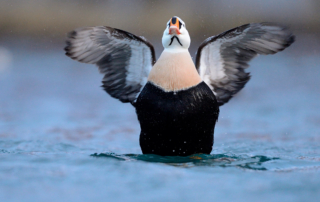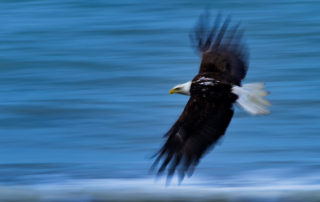SOME HIGHLIGHTS
• Tiger – tiger – tiger! Plenty of time and 12 safaris in one of India’s best tiger national parks, Bandhavgarh National Park, give us the best chances to experience the world’s biggest cat
• Always the same guides on our game drives
• We work together with some of Bandhavgarh National Park’s most qualified and experienced guides, with up to 30 years of experience
• Opportunities to see and photograph Sloth bears
Encounters with Indian bison, axis deer, sambar deer and barking deer
• Colorful bird life with e.g. Indian roller, bee-eaters, peacocks and much more
• The tour guide shows you his best spots and you get your own photographic advice and tips in a small group of like-minded people
India’s nature is not as well-known as Africa’s, but here there is at least as exciting animal life. Here in the world’s largest democracy, you have the opportunity to meet several species of deer and antelope, lots of fantastic birds and the world’s largest cat, the tiger.
India is an absolute must for those interested in nature, and for the nature photographer it offers fantastic photo opportunities of animals and birds. Seeing and photographing tigers is of course our big goal on this tour and to get as great chances as possible for encounters with the tiger, we have chosen to visit one of the best national parks for tigers in India, Bandhavgarh National Park. To further increase our chances of getting “many” and good tiger sightings, we choose to go in the dry season when both prey and predators gather around the waterholes that exist. Our guides will do their absolute best to ensure that we get to experience the tiger up close and with a little luck and patience, it can become memories for a lifetime.
BANDHAVGARH NATIONAL PARK
Our tour goes to Bandhavgarh National Park, perhaps the most famous of all India’s national parks as many television productions have been filmed here. Bandhavgarh became a national park back in 1968 and has for many years been one of the main places to see tigers as there has been a large and stable population here. The national park has one of the densest populations of tigers and in April, when the heat and drought really sets in, the wildlife concentrates around the waterholes. In Bandhavgarh, there are both natural and manmade waterholes very strategically located to create the best possible conditions for seeing and photographing tigers. It is not uncommon to see tigers lingering around the waterholes for long periods of time, busy drinking and cooling off in the water. The park is also relatively small, which increases the chances of seeing these magnificent cats.
In addition to tigers, the park has a very large diversity, there are just under 40 different mammal species. The most commonly seen mammals are deer such as e.g. spotted deer, sambar deer and nilgai. Bandhavgarh also has a good population of leopards but they are very difficult to see and especially if theres tigers around. However, it is more common to see the smaller jungle cat. With a bit of luck, we are also given the opportunity to see and photograph Sloth bear. Bandhavgarh also has a very rich bird life with close to 250 species seen.
The landscape of Bandhavgarh is largely semi-open sal forest with elements of denser bamboo forests and open grasslands. There are also both naturally occurring and created wetlands that attract animals during the dry season. The area is partly hilly and the hills give the park an intimate character. The largest hill and the fort that is present in the park is said to be the reason for the area’s name, Bandhavgarh. The story goes that Lord Rama gave the hill to his brother Lakshmana so that he could guard the fort (Bandhav = brother, Garh = fort).
PHOTOGRAPHIC LEARNING
During the tour, our photographic leader will constantly give you photographic advise based on your prior knowledge and level. The guidance in the field is completely adapted to you and your needs. In addition to this, we will also have theoretical sessions where we talk about different photo techniques that we will use during the tour.
The photographic education is adapted to the knowledge of the group and the individual, but we will also see to what photographic opportunities may arise during the tour. During our days in India, we will have a big focus on photographing tigers and other animals that often stay in forest environments. With these conditions, there are many different ways to compose your image so that you include the environment.
In addition, we will cover various techniques on how you can create movement in your images by e.g. to use panning as a method.
WHY IS THIS TOURS BOOKING CLOSING SO EARLY?
We always want you, as a participant on our tours, to have the best photo opportunities possible and when it comes to photographing tigers, it is important to be in the “best areas” in the national parks. The parks are divided into zones where a certain maximum number of safari jeeps have access and therefore you have to book your places early. Bandhavgarh National Park is divided into three “core zones” and then buffer zones, we always want to be in the “core zones” on our tours. Permits for the “core zones” in Bandhavgarh are released with 120 days notice and the pressure on permits is high. We book a permit for the vehicle and for the people who will ride in the vehicle, every person is booked with passport details and these cannot be changed afterwards. We can’t just book a safari vehicle and then book which people will ride in the vehicle, everything must be booked at the same time.
In order for us to be able to book places in the zones in the national park that we want to be in, we must therefore close the booking of the tour approx. 125 days before departure.
Itinerary
Day 1 (23/4) (Dinner)
The tour starts in Jabalpur in the afternoon. From the airport we then travel to our lodge in Bandhavgarh. After check-in, we have dinner and talk about the journey ahead
Day 2 – 7 (24-29/4) (Breakfast – Lunch – Dinner)
During these six days we will visit Bandhavgarh National Park. We have jeep safaris both in the morning and in the afternoon. We primarily focus on tigers. Our safaris will be focused on tiger photography. We will look for tigers at waterholes and rivers where they often hang out to be close to water. Bandhavgarh of course has a lot more to offer us as photographers.
After the morning safari, we return to our lodge for food, rest and to take care of our pictures. We will also have various workshops during the days.
Day 8 (30/4) (Breakfast)
Today we take a sleep in and eat breakfast a bit later. We end our stay in Bandhavgarh National Park with a final theoretical workshop. We then head towards Jabalpur and the airport.
Photographic leader
Magnus Martinsson, born in 1964, is a photographer, writer and natural geographer, living on Gotland since 1988. Since then, he has devoted himself to nature conservation issues in the profession. His interest in nature and photography has taken him on a large number of trips around the world and also given him deep knowledge of the Gotland homeland. Magnus contributes in various ways to conveying his knowledge to a broad public. He is a frequently engaged lecturer, excursion and travel leader. Magnus Martinsson is responsible for photos and text in a wide range of publications. As a member of the Naturfotograferna, he is one of the leading nature photographers in the country.



